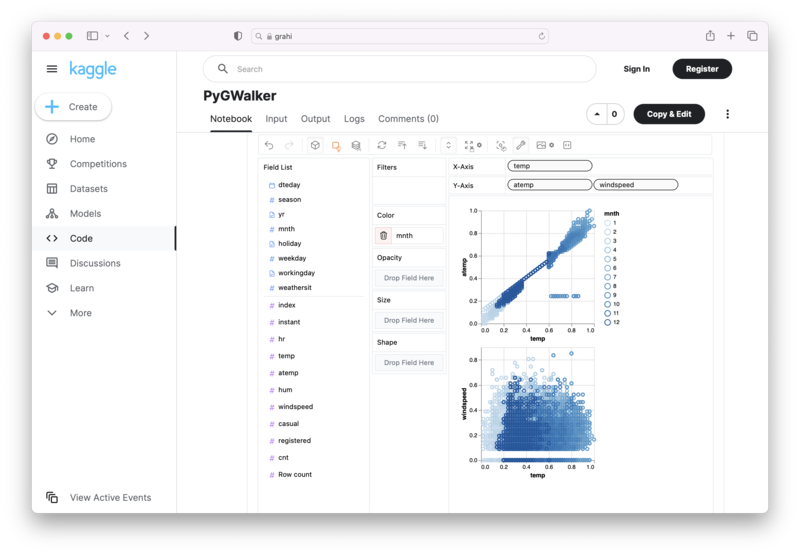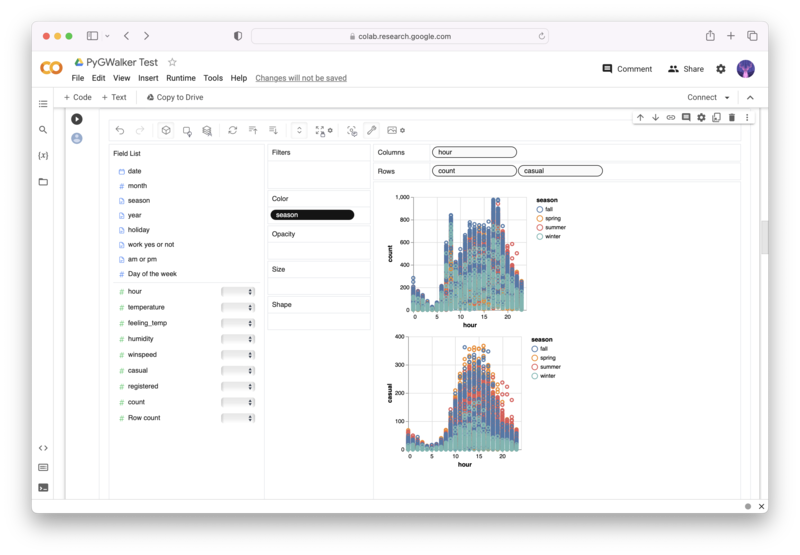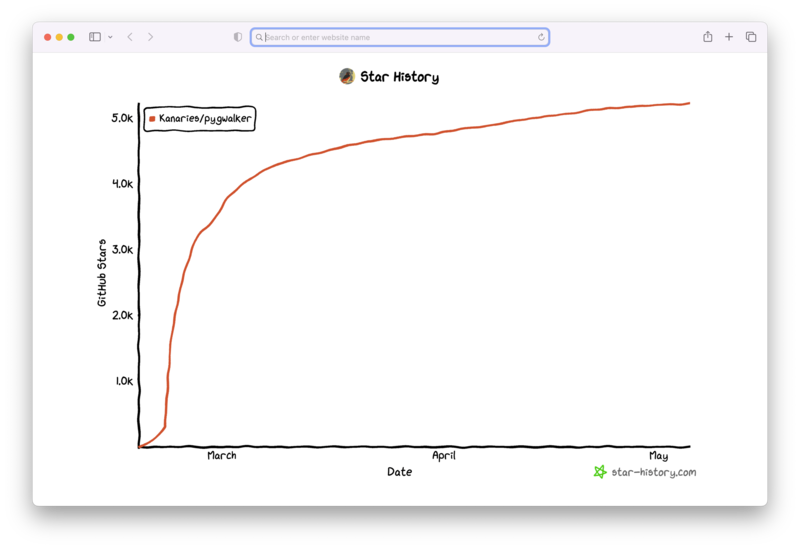Adding a New Column to a Pandas DataFrame: Methods and Techniques
Published on
Working with dataframes is an essential part of data analysis and data science. Pandas is a widely used library for data manipulation and analysis, and it provides an easy-to-use and flexible way to work with dataframes. A dataframe is a two-dimensional labeled data structure with columns of different types. It is like a spreadsheet or a SQL table, but with more power and flexibility. In this article, we will learn how to add a new column to an existing Pandas dataframe. We will also discuss different methods and techniques to insert a new column in a Pandas dataframe.
Want to quickly create Data Visualizations in Python?
PyGWalker is an Open Source Python Project that can help speed up the data analysis and visualization workflow directly within a Jupyter Notebook-based environments.
PyGWalker (opens in a new tab) turns your Pandas Dataframe (or Polars Dataframe) into a visual UI where you can drag and drop variables to create graphs with ease. Simply use the following code:
pip install pygwalker
import pygwalker as pyg
gwalker = pyg.walk(df)You can run PyGWalker right now with these online notebooks:
And, don't forget to give us a ⭐️ on GitHub!
What is a Pandas DataFrame?
A Pandas dataframe is a two-dimensional data structure with labeled axes. It is like a spreadsheet or a SQL table, but with more power and flexibility. A dataframe can be created from various input data formats like CSV, Excel, SQL database, and others. A dataframe can be manipulated and analyzed using various methods and functions provided by the Pandas library.
How to add a new column to a Pandas DataFrame?
To add a new column to an existing Pandas dataframe, we can use various methods and techniques. The most common way to add a new column is to use simple assignment. Let's see an example.
Suppose we have a dataframe with two columns: 'Name' and 'Age'.
import pandas as pd
data = {
'Name': ['Alice', 'Bob', 'Charlie', 'David'],
'Age': [25, 30, 35, 40]
}
df = pd.DataFrame(data)
print(df)Output:
Name Age
0 Alice 25
1 Bob 30
2 Charlie 35
3 David 40Now, we want to add a new column 'Salary' to the dataframe. We can use simple assignment as follows.
df['Salary'] = [50000, 60000, 70000, 80000]
print(df)Output:
Name Age Salary
0 Alice 25 50000
1 Bob 30 60000
2 Charlie 35 70000
3 David 40 80000We can see that a new column 'Salary' has been added to the dataframe.
Different methods to insert a new column in a Pandas DataFrame
There are several methods and techniques to insert a new column in a Pandas dataframe. Let's discuss them one by one.
Method 1: Simple Assignment
As we have seen in the previous example, we can add a new column to a dataframe using simple assignment. We can assign a list or a numpy array to a new column name in the dataframe as shown below.
df['NewColumn'] = [1, 2, 3, 4]Method 2: Insert Method
Another way to insert a new column in a Pandas dataframe is to use the insert method. The insert method takes three arguments: loc, column, and value. loc is the index of the column where we want to insert the new column. column is the name of the new column, and value is the value that we want to assign to the new column.
df.insert(loc=1, column='NewColumn', value=[1, 2, 3, 4])Method 3: Concatenate Method
We can also concatenate two dataframes along axis 1 to add a new column to an existing dataframe. The new column will be added to the right-hand side of the existing dataframe. The concat method takes two dataframes as arguments and concatenates them along axis 1.
df2 = pd.DataFrame({'NewColumn': [1, 2, 3, 4]})
df = pd.concat([df, df2], axis=1)Method 4: Assign Method
The assign method allows us to create a new column in a dataframe and return a new dataframe with the new column. It takes a dictionary as an argument, where each key represents a new column name, and each value represents the values of the new column.
df = df.assign(NewColumn=[1, 2, 3, 4])Can I overwrite an existing column in a Pandas DataFrame while adding a new column?
Yes, we can overwrite an existing column in a Pandas dataframe while adding a new column. When we assign values to a column, the existing values of that column get replaced with the new values.
df['Age'] = [26, 31, 36, 41]How can I insert columns at a specified location in a Pandas DataFrame?
We can insert columns at a specified location in a Pandas dataframe using the insert method. The loc parameter specifies the position at which to insert the column. We can use the integer index of the column to specify its position.
df.insert(2, 'NewColumn', [1, 2, 3, 4])We can also use the column name to specify its position.
df.insert(df.columns.get_loc("Age"), 'NewColumn', [1, 2, 3, 4])Conclusion
In this article, we have learned how to add a new column to an existing Pandas dataframe. We have discussed different methods and techniques to insert a new column in a Pandas dataframe, including simple assignment, insert method, concatenate method, and assign method. We have also discussed how to overwrite an existing column while adding a new column and how to insert columns at a specified location in a Pandas dataframe. By using these techniques, you can manipulate your dataframes efficiently and effectively.


